Mexico will hold the largest elections in its history on June 6, 2021. Candidates will run for, among other offices, the federal Chamber of Deputies, governorships in 15 states, and mayor in hundreds of municipalities.
Journalists and media workers covering the elections anywhere in Mexico should be aware of a number of risks, including physical attacks, harassment, intimidation, online bullying, surveillance, and government restrictions on reporting. In 2020, at least five journalists were killed in Mexico in direct relation to their work, according to CPJ research.
Contents
- Contacts & resources
- Physical safety: Reporting from political rallies and crowd events
- Physical safety: Surveillance and working in areas of high crime
- Physical safety: Reporting from election protests and disorder
- Physical safety: Reporting in a hostile community
- Physical safety: COVID-19 considerations
- Physical safety: Editor’s safety checklist
- Digital safety: General best practices
- Digital safety: Preparing your devices for political rallies
- Digital safety: Online abuse and misinformation campaigns
Criminal violence during the elections is of particular concern. During recent election cycles, most notably in 2018, dozens of political candidates were murdered, according to reports. In many cases, organized criminal groups are suspected of being involved in the violence.
“I think we’re never really sufficiently prepared,” Isaín Mandujano, correspondent of Proceso magazine in the southern state of Chiapas, told CPJ via phone. “Media often don’t train their reporters sufficiently, they’re not worried enough about their people’s safety, so we have to analyze where there may be possible violence ourselves.”
Others, such as editor-in-chief Adrián López of newspaper El Noroeste in the northern state of Sinaloa, are worried about digital threats. “I think we still need to prepare ourselves a lot better for online aggressions,” he told CPJ via phone. “Media are often attacked via social media, by disinformation campaigns, hacking and DDoS attacks.”
CPJ Emergencies has compiled a safety kit for journalists covering the elections. The kit contains information for editors, reporters, and photojournalists on how to prepare for the elections, and how to mitigate physical and digital risk.
PDFs of the election safety kit are available to download in English and Spanish.
Contacts & resources
Journalists requiring assistance in Mexico can contact CPJ’s Emergencies program via electionsafety@cpj.org or CPJ’s Mexico representative, Jan-Albert Hootsen, at jahootsen@cpj.org.
In addition, CPJ’s resource center has additional information and tools for pre-assignment preparation and post-incident assistance.
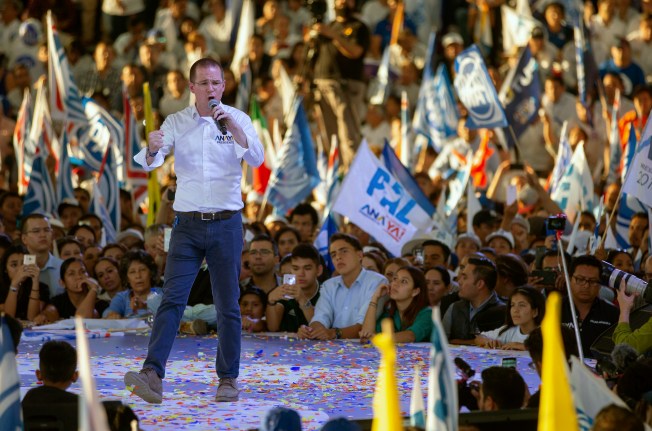
Physical Safety: Reporting from political rallies and crowd events
Tensions between political parties, candidates, their supporters and criminal gangs may affect journalists covering the election cycle across Mexico. Since September 2020, at least 66 political candidates have been assassinated, according to the AFP. This is in addition to over 150 political candidates who were murdered in the 2018 election cycle, in what analysts describe as a mix of political conflict and organized crime attempting to insert itself into the electoral process.
When attending political rallies, crowd events, and/or protests, media workers should be aware of the potential risk of getting caught up in assassination attempts of political candidates, as well as violence from opposition supporters and/or criminals who may clash at campaign rallies. To help minimize the risks at such events, media workers should consider the following safety advice:
Positioning & situational awareness
- Regularly assess your position in relation to political candidates at public crowd events, noting that the closer you are, the greater the potential danger.
- Avoid getting caught up in the crowd if political candidates–who could be targeted at close range by hostile individuals–move amongst the audience. If you intend on asking a candidate a question, do so from a safe distance (if feasible).
- Regularly monitor the crowd for individuals who may present a threat. Pay attention to how people are behaving, if they are armed, and if/how they are communicating with others. Trust your instincts, and maintain a safe distance behind or to the side of any suspicious individuals. Alert the authorities if safe to do so.
- Pay attention to vehicles parked close by and any individuals in or around them for signs of suspicious activity.
- Remain alert to speeding vehicles or motorbikes approaching the location, which could be used to target political candidates in drive-by shootings.
- Have an escape strategy in case circumstances turn hostile. You may need to plan this on arrival, but if possible try and do so in advance. Once at the event, familiarize yourself with your surroundings. Report from a secure location (such as a press holding area if there is one), taking into account the distance from all available exit routes.
- If working with others identify an emergency rendezvous point. Regularly assess the safety of all routes leading to this point.
- Avoid hanging around and/or questioning people if the crowd becomes hostile.
- Park your vehicle facing the direction of escape in an accessible and secure location, or ensure you have an alternative guaranteed mode of transport.
Planning & general safety
- Research in advance who is likely to be at the event. Consider wearing a protective body vest if in an area of high crime, if the political candidate is a potential target, or if violence can be expected from opposition supporters. For more information see CPJ’s personal protect equipment (PPE) guide here (available only in English).
- If reporting from an outdoor event, consider the time of day and exposure to the sun, noting that you may be waiting for some time before an event starts. Keep hydrated, wear a sun hat, and apply sunscreen if necessary.
- If event security is provided, try to find how professional/competent they are, and if they are likely to assist you if in danger, especially if harassment and/or physical or sexual assault is a potential risk.
- Working with a colleague is sensible, so consider going with another reporter or photographer if possible, noting that election events may finish late into the evening. After dark the risk level increases.
- Ensure that you have the correct accreditation or press identification with you. For freelancers, a letter from the commissioning employer is helpful. Have it on display only if safe to do so. Avoid using a lanyard around your neck; clip it to a belt or in a transparent velcro pouch around your bicep instead.
- If the crowd might be or become hostile toward the media, avoid clothing with media company branding and remove media logos from equipment/vehicles if necessary.
- Wear sturdy footwear with hard soles, laces, and some kind of ankle support. Avoid wearing sandals or slip-on shoes.
- If spitting or projectiles from the crowd are a possibility, consider wearing a waterproof, discrete bump cap.
- Try to gauge the mood of the crowd. If possible, call other journalists already at the event to assess the atmosphere. If the crowd/speakers are hostile to the media, mentally prepare for verbal abuse. In such circumstances, just do your job and report. Do not react to the abuse and avoid engaging with the crowd. Remember, you are a professional even if others are not.
- Identify the closest point/location of medical assistance.
- If the task was difficult/challenging, try not to bottle up your emotions or hide your feelings. Try to discuss any challenging experiences with your superiors and colleagues, which can often help release built-up tension and anxiety.
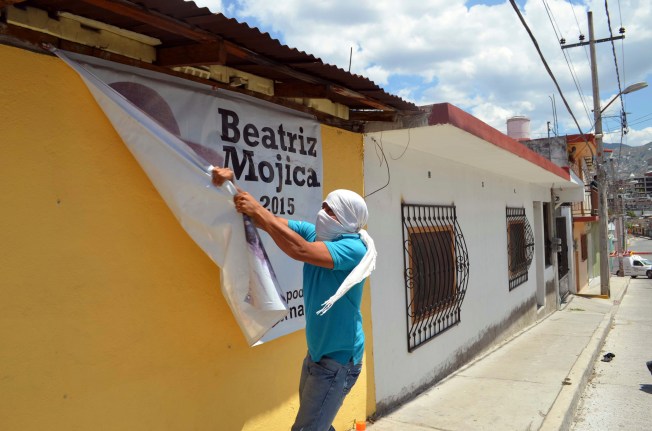
Physical safety: Surveillance and working in areas of high crime
Media workers may be required to report from areas of high crime throughout the election cycle, and may be harassed and/or targeted by criminals, politicians, or the police. They may also be subjected to physical surveillance. Although areas of high crime are often well-known, be aware that any location can be subject to criminal activity and violence.
General safety advice
- Media workers should consider their profile and previous work before travelling to an area of high crime. Note that you could be at increased risk of surveillance and potential harm if you have reported on a criminal group/s or politician/s in the area before.
- Research the location in advance. Understand the type of crime/s that is prevalent in the area, as well as the layout so that routes in/out can be assessed for potential issues, such as dead ends or choke points. Be fluid with your plans and prepared to adapt your itinerary accordingly.
- Try to establish and work with trusted contacts in the area you intend to visit, who can provide advice/assistance during your assignment. Be aware that non-locals are often treated with suspicion, particularly in areas controlled by cartels. If working in a particularly dangerous area, consider the need for extra support or working alongside the authorities (if safe to do so).
- It is sensible to maintain a low profile throughout the assignment, avoiding any overt displays of wealth or attracting undue attention.
- Maintain constant awareness of your surroundings, and remain vigilant of activity around you and attentive to individuals approaching. Watch out for anybody taking photos or following you, whether on foot or in a vehicle.
- Behave purposefully and with confidence. Try and avoid being distracted on the go (e.g. using your phone).
- If possible, avoid working in high crime areas after dark, or in isolated locations with low footfall.
- Minimize time on the ground as much as possible. Get what you need and get out.
Location safety & awareness
- It is sensible to avoid meeting individuals in quiet, poorly lit, and/or remote locations, especially after dark, when the risk level increases. Nightclubs and bars, which can be targeted by criminals and armed gangs, should also be avoided.
- Pay constant attention for individuals who could be monitoring you. This can include teenagers and younger children who are sometimes paid by criminal groups to act as informants.
- If meeting in a public place, such as a restaurant or hotel, avoid sitting near windows where you can be more easily monitored.
- On arrival make a mental note of the location layout, paying attention to all available exits and escape routes.
- Remain alert to vehicles pulling up outside, who is coming in/out of the building, and individuals hanging around outside. Make a regular assessment of who is around you, and identify who might be able to assist you if necessary.
- Make sure a colleague, friend, or family member knows where you are heading to and what time to expect you back. If in an area of high crime, consider setting up a check in and overdue procedure, and an action plan for when the check in does not happen at a designated time.
- If driving, park your vehicle in a well-lit and busy area, facing the direction of escape. Conduct a visual inspection of the vehicle exterior for any signs of damage or tampering before departing.
- Media workers should consider staying in a reputable chain hotel with decent security, noting that less well known hotels are sometimes used for illicit activities.
- If working in the same location for a period of time, try to vary your daily routine as much as possible, and avoid setting patterns.
Transportation
- Avoid using taxis when arriving at airports and bus stations, noting that some taxi drivers can work as informants for criminal groups. If possible, use a trusted driver from the local area to meet you on arrival instead.
- If travelling by public bus/coach, be aware that petty crime and armed robbery are risks in certain locations, and that drivers sometimes work in cohorts with criminal groups.
- If driving for the assignment, consider how appropriate the vehicle is relative to the location. Wherever possible use a vehicle that blends in (e.g. an expensive SUV will attract more attention, particularly in less well-off and rural areas). Note that if crossing from one state to another your vehicle registration plate will indicate that you may not be from the area.
- Plan your journey along main federal highways (toll roads) as much as possible. Try and avoid using the secondary, minor, and side roads, where the chances of meeting illegal checkpoints and/or criminals are higher.
- Ensure that vehicle doors are locked and windows are kept up when driving in slow traffic, and while at junctions and traffic lights, noting that journalists have been targeted while in their vehicles, as highlighted in the case of murdered journalist Carlos Domínguez Rodríguez.
- When driving, routinely check your rear view and side mirrors. If you suspect you are being followed, trust your instincts and drive to a place of safety as soon as possible.
- While driving remain alert to the possibility of vehicle ramming, as seen recently in the case of journalist Albert Amaro.
- Avoid travelling at night unless absolutely necessary, and plan your journey to arrive at your destination during daylight hours.
- Know your approximate planned journey duration and expected arrival time. Do not rely on apps to work out driving time/distance. Source reliable local information instead.
- If travelling in a riskier location where a check-in procedure is deemed necessary, communicate any change of itinerary to your management team or trusted contact in good time. Always plan an alternative or contingency route in case you need to use it.
- Limit the number of valuables you take. Do not leave any equipment in vehicles, which are likely to be broken into. After dark, the criminal risk increases.
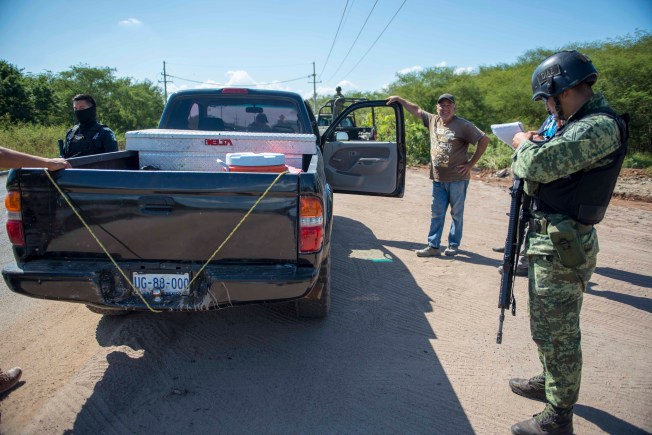
Checkpoints
Checkpoints operated by the military and police can be a common sight along Mexican highways and roads. In addition, illegal checkpoints operated by local paramilitary groups or criminal gangs present a security risk in certain parts of the country.
Overview
According to sources CPJ spoke to, who asked to remain anonymous to protect their security, various types of checkpoints are particularly prevalent in (but not limited to) the following areas of the country:
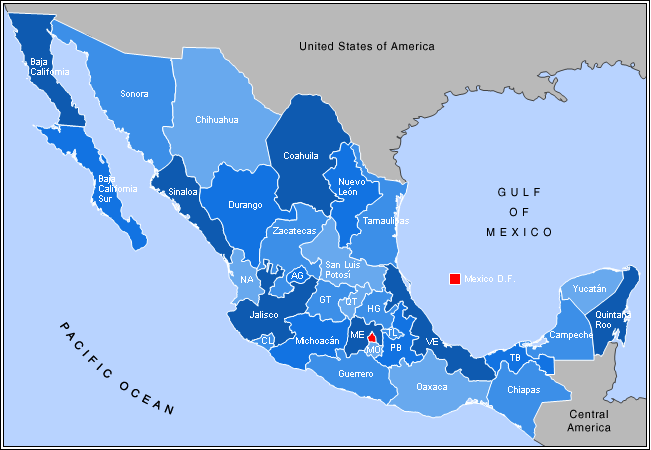
- The states of Michoacán, Guerrero, Sinaloa, and the Tierra Caliente region (which covers parts of Estado de México, Michoacán, and Guerrero).
- Chiapas and Tabasco states, in the south, and Tamaulipas state in the north, due to more stringent immigration policing and border security.
- Militia- and community-controlled checkpoints are common in parts of the Costa Chica and La Montaña areas of Guerrero state.
- Random checkpoints and roadblocks set up by protesting civilians can be an issue in states such as Chiapas, Oaxaca, and Guerrero, and can appear with little or no warning. Be aware of the potential for violence at such checkpoints if the police clash with civilians.
- Unions and other social groups occasionally occupy toll booths on federal highways, and only allow traffic to pass when drivers pay a small amount of money. Note the potential for violence as the authorities attempt to remove such groups.
General safety advice
- If feasible, identify known legitimate checkpoints along your route in advance.
- Try and find out the location of any illegal checkpoints in advance by contacting local journalists, who are often made aware of them in real time through local contacts and networks. If feasible plan your route to avoid them.
- Note that seemingly legitimate checkpoints may be operated by criminals with falsified identification who may be wearing fake uniforms.
- Avoid driving in areas where illegal checkpoints are known to be a problem, especially after dark when the prevalence of checkpoints and level of risk increases.
When approaching and while at checkpoints you should:
- Slow down, indicate if pulling over, dim headlights (if at night), and park where directed to do so.
- Keep your hands visible at all times, and turn on the interior light (if dark).
- Keep windows closed until asked to open them.
- Do not use any devices such as mobile phones.
- Keep equipment, such as laptops and cameras, out of sight. If asked, mention that you have them in the vehicle.
- Have all travel and vehicle documents ready to hand over (e.g. passport, driving license, vehicle insurance policy etc.).
- If wearing sunglasses and/or a hat, take them off.
- Stay calm, maintain eye contact, a confident posture, and engage in a positive manner. Comply with instructions, and always be polite and courteous.
You should avoid:
- Accelerating, swerving or trying to turn off the road.
- Shouting or become hostile to an individual.
- Turning your back on an individual if they are still talking to you.
- Using confrontational body language (e.g. pointing or folded arms).
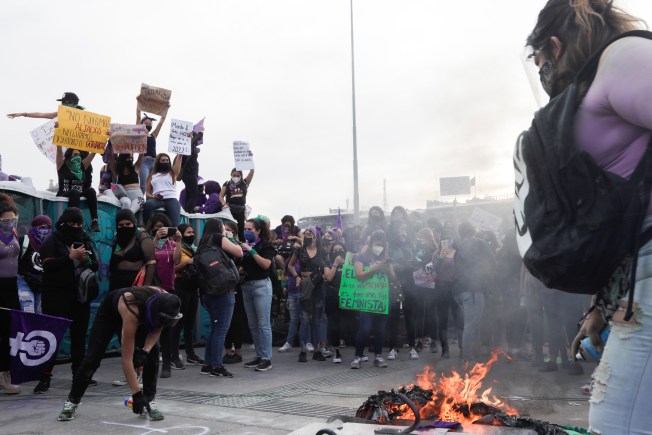
Physical Safety: Reporting from election protests and disorder
Demonstrations can occur during any election cycle, as witnessed in Mexico in 2012 and 2015. Media workers covering such protests can be exposed to a range of dangers if violence breaks out between protesters, counter-protesters, criminal groups, and/or the police, who are known to use tear gas and pepper spray to disperse crowds, as seen during a recent International Women’s Day march in Mexico City. Be aware that female reporters can be at a heightened risk from harassment and violence at protest locations, as documented by CPJ.
To help minimize the risk, media workers should consider the following safety advice:
Planning
- Identify the material you require for your report. Lingering at a protest gathering material that will not be used increases the risk of harm.
- If violence is anticipated, the use of protective safety goggles/glasses, helmets, tear gas respirators, and protective body vests should be considered, depending on the range of threats. For more information see CPJ’s PPE guide.
- Research the layout of the location in advance by studying a map of the immediate area. Identify all potential safe routes in case you need to escape, which streets/roads are dead ends in order to avoid going down them, as well as an emergency rendezvous point if you are working with others.
- Individuals should not be expected to work alone at protest locations. Try to work with a colleague and set up a regular check-in procedure with your base, family, or friends. Working after dark is riskier and should be avoided if possible. For more information, see CPJ’s advice for journalists reporting alone.
Clothing & equipment
- Be aware that certain colors or combinations of colors are associated with political parties. Always consider who is likely to be at a protest location and wear colors that won’t attract a negative reaction. This includes red (Morena); red, white & green (PRI); blue and white (PAN); yellow and black (PRD); red and yellow (PT); green and white (PVEM); orange and white (MC); and purple and white (PES).
- Avoid wearing loose clothing, military style patterns, political slogans, media branding, and flammable materials (e.g. nylon).
- Wear footwear with hard soles, laces, and some kind of ankle support.
- Fix long hair into a bun or a low braid that can be tucked into clothing. This will prevent individuals from pulling you from behind. Avoid wearing chains, lanyards, or jewelry around your neck for the same reason.
- Take a medical kit if you know how to use it, and ensure you have a full battery on your mobile phone. If this is not feasible, try and take a portable power bank with you and a charger.
- Only carry the minimum amount of equipment with you as necessary, which will help keep you agile and won’t weigh you down if you need to move quickly.
- Limit the number of valuables you take. Do not leave any equipment in vehicles, which are likely to be broken into. After dark, the criminal risk increases.
Positioning & situation awareness
- Consider your position and maintain situational awareness at all times. If feasible find an elevated vantage point that might offer greater safety.
- If working close to a crowd, keep to the periphery and avoid being sucked into the middle, where it is hard to escape. All journalists should be conscious of not outstaying their welcome in a crowd, which can turn hostile quickly.
- Continuously observe and read the mood and demeanor of the authorities in relation to the crowd dynamic. Police can become more aggressive if the crowd is agitated (or vice versa). Visual cues such as the appearance of police dressed in riot gear or throwing of projectiles are potential indicators that aggression can be expected. Pull back to a safe location, or plan a quick extraction when such ‘red flags’ are evident.
- Photojournalists generally have to be in the thick of the action so are more at risk. Consider having someone watch your back, remember to look up from their viewfinder every few seconds to assess your position, and avoid wearing the camera strap around your neck to prevent strangulation or being pulled to the ground. Photojournalists often do not have the luxury of being able to work at a distance, so it is important to minimize the time spent in the crowd. Get your shots and get out.
- Identify the closest point of medical assistance.
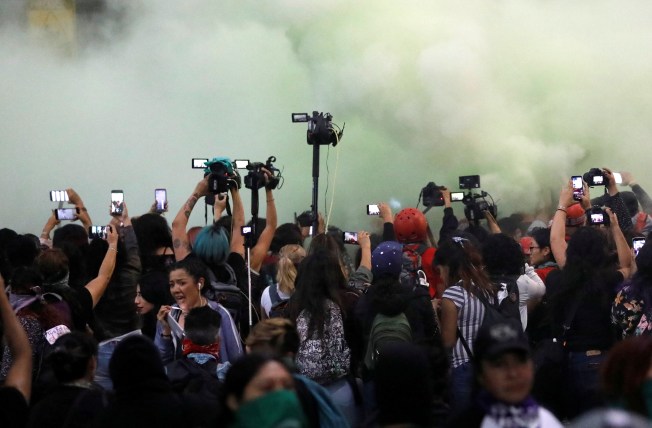
Dealing with tear gas
The use of tear gas can result in sneezing, coughing, spitting, crying, and the production of mucus that obstructs breathing. In some cases, individuals may vomit, and breathing may become labored. Such symptoms could potentially increase media workers’ level of exposure to coronavirus infection via airborne virus droplets. Individuals who suffer from respiratory issues like asthma, who are listed in the COVID-19 vulnerable category, should therefore avoid covering crowd events and protests if tear gas is likely to be deployed.
In addition, evidence suggests that tear gas can actually increase an individual’s susceptibility to pathogens such as coronavirus, as highlighted by NPR.
For further guidance about dealing with exposure to and the effects of tear gas, please refer to CPJ’s civil disorder advisory (available in Spanish here).
Physical harassment and assault
Media workers have previously been threatened and assaulted by protesters, criminal groups, and the police in Mexico, as highlighted by CPJ. When dealing with aggression, consider the following the safety advice:
- Assess the mood of protesters toward journalists before entering any crowd, and remain vigilant for potential assailants. If the crowd is hostile, retreat to a safe location as soon as possible.
- Read body language to identify an aggressor/s, and use your own body language to pacify a situation.
- Keep eye contact with an aggressor, use open hand gestures, and keep talking with a calming manner.
- Keep an extended arm’s length from the threat. Back away and break away firmly without aggression if held. If cornered and in danger, shout.
- If aggression increases, keep a hand free to protect your head and move with short deliberate steps to avoid falling. If in a team, stick together and link arms.
- While there are times when documenting aggression is crucial journalistic work, be aware of the situation and your own safety. Taking pictures of aggressive individuals can escalate a situation.
- If you are accosted, hand over what the assailant wants. No equipment or money is worth your life.
Physical Safety: Reporting in a hostile community
During the election cycle, media workers may be required to work in areas or among communities that are hostile to the media or outsiders. This can happen if a community wants to protect illicit activities and individuals from being discovered, such as drug trafficking or human trafficking, and therefore view journalists as a threat that could potentially expose them. Others may believe that the media does not fairly represent them or portrays them in a negative light.
To help reduce the risks
- Secure permission to access communities in advance, noting that turning up without an invitation or someone vouching for you can cause problems. Try and ascertain what the likely reaction to the media will be by researching the community and their views in advance. Adopt a low profile if necessary.
- Be aware that certain parts of Mexico are governed by indigenous communities who have their own laws and/or their own civilian police force. If working in such a community you must obtain the permission of the community in advance, and thoroughly research the local laws, customs, and rules to prevent issues on location.
- If you are not familiar with the area or are perceived as an outsider, consider hiring a local facilitator, community leader, or person of repute in the community who can accompany you and help coordinate your activities. Identify a local power broker who can help in case of an emergency.
- If crime rates are high, and/or if there is endemic abuse of alcohol or drugs in the community, be aware that the unpredictability factor increases.
- If visiting a community is particularly high risk, consider wearing a covert protective body vest.
- Ideally work in a team or with back up. Depending on the risk level, the backup can wait in a nearby safe location, such as a shopping mall or petrol station, to react if necessary.
- Think about the geography of the area and plan accordingly. Consider the need for security if the risk is high. A locally hired ‘backwatcher’ to protect you/your equipment can be attuned to a developing threat while you are concentrating on work.
–Park your vehicle in the direction of escape, ideally with the driver in the vehicle ready to go.
–If you have to work remotely from your transportation, know how to get back to it. Identify landmarks and share this information with colleagues.
–Know where to go in case of a medical emergency, and work out an exit strategy.
- Always ask for consent before filming/photographing an individual. Be respectful to the individuals and their beliefs/concerns at all times.
- When you have the content you need, get out and do not linger any longer than necessary. It is helpful to have a pre-agreed cut off time and to depart at that time. If a team member is uncomfortable, do not waste time having a discussion. Just leave.
- Wear clothing without media company branding, which should be appropriate and respectful. Remove media logos from equipment/vehicles if necessary.
- Take a medical kit if you know how to use it.
- Limit the amount of valuables/cash that you take. Will thieves be attracted by your equipment? If you are accosted, hand over what they want. Equipment is not worth your life.
- Avoid working in a hostile community at night, when the risk level increases dramatically.
- Before broadcast/publication consider that you may need to return to this location. Will your coverage affect your welcome if you return?
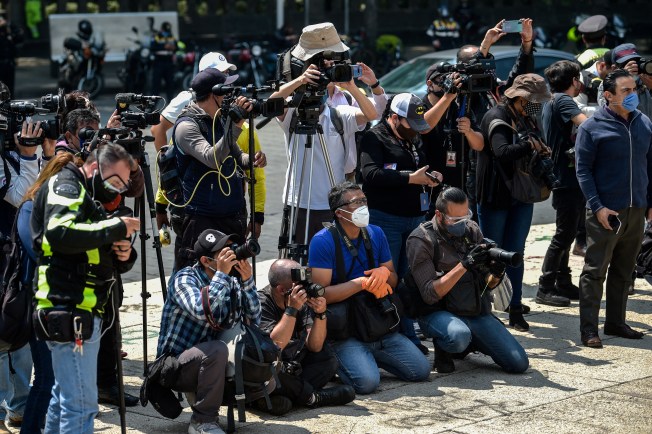
Physical Safety: COVID-19 considerations
Large crowds are commonplace at election events and/or related protests. Maintaining physical distancing measures at such events will be challenging, members of the public may not wear face coverings/facemasks, and media workers could be confined to a particular area in close proximity to other journalists. Such confinement could potentially expose them to virus droplets, as well as verbal or physical attacks from hostile members of the public, who could cough or sneeze over them.
Be aware that people shouting or chanting can result in the spread of virus droplets, therefore increasing media workers’ level of exposure to coronavirus infection.
- Always research what COVID-19 restrictions are in place where you will be reporting from, which will vary according to each location and may change with little or no notice. A useful state by state guide can be seen here.
- Be aware that restrictions may limit the movement of individuals, as seen at the northern border with the United State and the southern borders with Guatemala and Belize, according to Politica Expansion, a digital magazine.
- If travelling internationally to cover the Mexican elections you may be required to provide evidence of a recent COVID-19 test, and/or need to quarantine on arrival. Always check the latest requirements in advance.
- Wearing a good quality face mask is essential at any crowded event or protest (i.e. N95 / FFP2 standard or higher). Be aware that fines can still be levied by the authorities for not wearing a face mask in public, despite recent court cases in Mexico finding the mandatory wearing of face masks unconstitutional.
- Ensure you wash your hands regularly, properly, and thoroughly as often as feasible throughout the assignment. Ensure hands are dried in the appropriate way. Use alcohol-based hand sanitizer regularly if you can’t wash your hands, but try not to make this a substitute for a regular hand washing routine.
- All equipment should be thoroughly cleaned post-assignment.
- All clothing and shoes should be removed before re-entering your home and washed / cleaned with hot water and detergent where possible.
For further detailed COVID-19 reporting guidance, please see CPJ’s COVID-19 safety advisory (available in Spanish here).
Editor’s safety checklist
Editors may require media workers to cover election-related events and stories at short notice, and should consider the increased level of risk when reporting from areas of high crime or an election event that could turn hostile (e.g. a protest). This checklist includes key questions and steps to consider to help reduce risk for staff.
Staff considerations
- Does the profile, identity, or gender of any staff member make them a possible target?
- Are selected staff experienced enough for the assignment?
- Do any selected staff fall into the COVID-19 vulnerable categories or have family members/dependents who rely upon them? If so, have they been vaccinated with the required number of doses?
- Are selected staff fit enough and/or have any health issues that could affect them during the assignment?
- Does the specific role of any selected staff put them at more risk? For example, photojournalists who work closer to the action.
Equipment & transport
- Have you discussed the risk of COVID-19 exposure with selected staff, and provided them with good quality face masks and alcohol-based hand sanitizer?
- If violent protests are likely, have you made available the relevant PPE, such as safety helmets, safety goggles, body armor, tear gas respirators, and medical kits? Do staff know how to use such equipment properly?
- Are selected staff driving themselves, and is their vehicle roadworthy and appropriate?
- Have you identified how you will communicate with the team and how they will remove themselves from a situation if necessary?
General considerations
- Is the level of risk to selected staff acceptable relative to the editorial gain?
- Have selected staff been issued with the appropriate accreditation, press passes, or a letter indicating they work for your organization?
- Have you recorded and securely saved the emergency contact details of all staff going on the assignment?
- Have you set up a check-in procedure (if deemed necessary)?
- Is the team correctly insured and have you put in place appropriate medical cover?
- Have you identified local medical facilities in case of injury, and made team members aware of the details?
- Have you considered and discussed the possibility of trauma-related stress that could result from the assignment?
For more information about risk assessment and planning, see CPJ’s Resource Center.
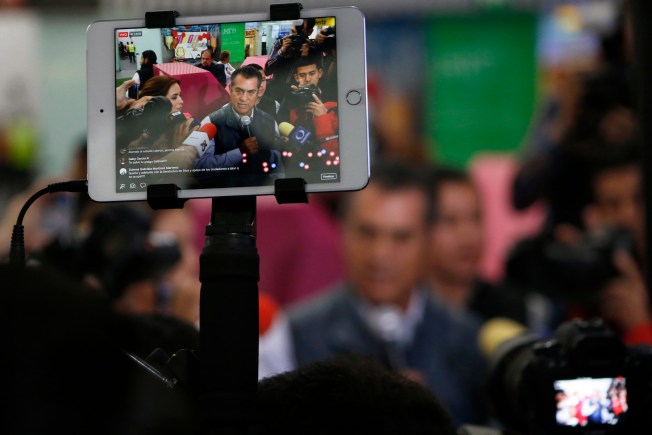
Digital Safety: General best practice
Journalists face a range of digital threats as they cover the upcoming Mexican elections. The last election saw an increase in online harassment and misinformation campaigns targeting journalists, which has continued under the current administration. Newsrooms may also find that their sites are targeted by DDoS attacks which take down a website leaving media outlets with no platform on which to publish. This strategy was used against political candidates, according to reports.
The Cartel Project, a collaborative investigative journalism initiative, has reported that at least 25 companies have sold surveillance software to Mexican law enforcement, and some has been obtained by drug cartels. CPJ has collated reports of multiple Mexican journalists or family members targeted with spyware, as well as responses from the government and the Israeli company NSO Group, who are accused of supplying them with advanced Pegasus spyware. Learn more in CPJ’s Pegasus advisory.
Best practices
- Secure your accounts against hackers by turning on two-factor authentication (2FA) and creating unique long passwords of more than 20 characters. Use a password manager, currently the most secure way of managing passwords, if possible.
- Update devices, apps, and browsers regularly to protect against malware, including spyware.
- Be aware of phishing attacks–messages tailored to trick you into installing malware that may be sent via WhatsApp groups, social media messages, email, or SMS. Avoid clicking on a link; instead, verify the information through a search engine or by calling the sender. Use the preview button in your email account to view documents and take screenshots to avoid downloading them.
- Newsroom IT teams should increase security on websites to protect against DDoS attacks, including deploying web application firewalls and ensuring extra server capacity. Smaller newsrooms should sign up for services such as Cloudflare Project Galileo or Google Project Shield. Plan what to do if your site is taken offline.
Digital Safety: Preparing your devices for political rallies
Journalists covering the election campaign are likely to be using newsroom equipment as well as their own devices while out reporting. Journalists’ devices are at risk of being stolen, broken, or taken and/or searched either at an event or when travelling to it. Journalists using their personal devices are more at risk of others gaining access to their personal data, including information on family members. Taking steps to remove or limit access to information before travelling is key to better security.
Preparing your devices: best practices
- Review what information is on your phone or laptop. Backup and delete documents, photos, videos, and other material that contain personal information about you, your family, or your sources.
- Be mindful that documents gathered while doing research for stories on organized crime, political candidates, or the authorities could put you at risk should your devices be searched. Review footage from cameras and remove photos and videos that you would not want to fall into the wrong hands.
- Set up your devices to remote wipe. Devices will only remote wipe if they are connected to the internet via Wi-Fi or data.
- Secure your devices with a password.
- Think about whether to use biometrics or not to unlock your phone. This can be useful if you need to gain access to your device quickly, but it also means that others are more easily able to unlock your phone by holding it up to your face or forcing your finger to unlock it.
- Consider turning on encryption for your laptop or Android phone. The latest version of iPhone comes with encryption as standard. Encrypting your devices will ensure that if your device is stolen people will be unable to access your data without the password.
- Log out of your accounts and delete your browsing history. This will better protect your accounts from being accessed should someone gain entry to your device.
- Log out of and remove apps that you do not need to use when on the election trail, especially apps that contain a lot of personal information about you or your family.
- Be aware that contact details of others are stored in the cloud account linked to the phone as well as on the device itself.
- Take as few devices with you as possible. If you have a spare phone it is better to travel with that and leave your personal phone at home.
On the ground: best practice
- Phone calls and SMS messages can be intercepted, so where possible use end-to-end encrypted messaging services, such as WhatsApp or Signal, to communicate with others. Where possible set messages to delete after a certain timeframe.
- If you are live streaming be aware that this gives away your location, which has physical security implications.
- Backup your work frequently in case you are detained or if your devices are broken or stolen.
For further digital security guidance, please see CPJ’s Digital Safety Kit (available in Spanish here)
Digital Safety: Online abuse and misinformation campaigns
Journalists are likely to face an increased level of online harassment, including targeted attacks and misinformation campaigns directed against them, during election time. This was the case in 2018, when political supporters, bots, and online harassers targeted media workers covering the election cycle, as documented by Freedom House. Journalists in Mexico have also been facing an increasingly hostile online environment under the current president, as documented by CPJ, indicating that online threats are likely to increase during the upcoming election. There are a number of steps that journalists can take to better protect themselves and their accounts.
To minimize the risk
- Secure your accounts with 2FA, long passwords, and a password manager, as described above. Don’t reuse passwords.
- Search for your name using various search engines and remove data that you do not want available in the public domain.
- Review your social media accounts and remove or limit access to any personal data that can be used to verify your identity or locate you. Remove any contact details, such as personal phone numbers, that you do not want made public.
- Look through your accounts and remove any photos or images that could be manipulated and used as a way to discredit you.
- Monitor your accounts for signs of increased trolling activity or for indications that a digital threat could become a physical threat. See below for more details on what makes a greater threat. Be aware that certain stories are likely to attract higher levels of harassment.
- Speak with family and friends about online harassment. Online abusers often obtain information about journalists via the social media accounts of their relatives and social circle. Ask family and friends to remove from or limit access to photos of you on their social media sites.
- If you can, speak with your editor about having a plan in place should you need to leave your home as a result of an online threat. If you are a freelance journalist, speak with colleagues about online abuse and setting up a support network to help you should you need it.
During an attack
- Try to ascertain who is behind the attack and their motives. This can help you gauge the risk of a physical threat.
- Look at your messages and to see whether there is a high risk of a physical attack. The risk is deemed to be higher if data, such as your home address or phone number, is being circulated online. If you do not feel able to review your messages you should ask a colleague or trusted friend to do it for you.
- Document any comments or images that are of concern, including screenshots of the trolling, the time, the date, and the social media handle of the troll. This information may be useful at a later date if you wish to report the abuse to a social media company, your editor, organizations that defend freedom of expression, or, in some cases, the authorities.
- Inform your family, employees, and friends that you are being harassed online. Adversaries will often contact family members and friends as part of the harassment cycle.
- Blocking, muting, and restricting who can reply to your messages may be helpful steps to take, although this restricts your ability to interact with others online and may mean that you miss potentially threatening messages.
- Consider making most of your social media accounts private until the harassment has died down.
- Work with your newsroom to decide if and how you should respond to online harassment. It is not feasible or useful to respond to each message. However, during a misinformation campaign it may be helpful to have a message of support from your newsroom pinned at the top of your and their social media feed.
- Online harassment can be an isolating experience. Ensure that you have a support network to assist you. In a best-case scenario, this will include your employer. For more information about how to protect your mental health in the event of an online attack, consult CPJ’s safety note (available in Spanish here).
For further support, see CPJ’s guide to protecting against online attacks (available in Spanish here).
